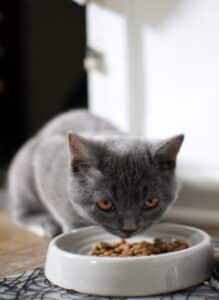 Did you know that over half of all pet dogs and cats are overweight? And that trend continues with other household pets too. So how can we slow this trend?
Did you know that over half of all pet dogs and cats are overweight? And that trend continues with other household pets too. So how can we slow this trend?
The first step is to address nutritional needs. It’s important to control how much food your pet eats. But it’s equally important that you understand what they eat.
To help you find the best diet for your pet, read on to discover everything about pet nutrition.
Learn Nutritional Basics
Like humans, pets need a balanced and nutritious diet to help keep them in optimal health. This will vary depending on your pet type and other factors such as age, weight, and lifestyle.
When considering pet nutrition, your first task is to research nutrition for your pet type.
Doing this will help you read the nutritional levels of pet food to help you make informed decisions when shopping in the supermarket. You want to note the protein, fiber, fat, and moisture percentage. That’s usually provided in the form of a chart.
Pet brands often have lots of persuasive material on their packaging and helpful guides on suitability for age, weight, and activity level.
However, to ensure you pick the best ingredients for your pet, it’s always better to read the official nutritional information on the back instead.
Provide a Varied Diet
Variety is one of the best ways to ensure your pet gets all the proper nutrition.
Don’t stay loyal to one brand even if you know your pet loves that brand. They’ll benefit more from having a mix of premium brands in their diet as all will have different nutritional content.
The best way to do this is to buy two or three brands at the supermarket and read the labels to ensure they contain different types of meat, fruits, vegetables, or fish. You can also supplement these brands with home-cooked meals.
Choose Quality Products
When you become familiar with nutritional labels, you’ll notice that brands differ in ingredients. Some offer primarily natural, organic food products, while other pet food is more heavily processed.
As a general rule, avoid as much processed food as you can. The more ingredients listed on a pack, the more likely the food is heavily processed.
Choose fresh ingredients and avoid brands that list many chemicals and additives. You can also give supplements to pets to ensure they get the most balanced and nutritious diet.
Learn Portion Sizes
It’s tempting to fill up a bowl of food and leave it out for your pet. But some pets become overweight by overeating, so you need to monitor their portion control.
Your first step is to read the food packaging, as it will always tell you the amount you need, and you may need to adjust that depending on your pet’s weight.
If you can’t find the correct information, look at the weight on the food label and check for portion sizes online. Make sure you note the frequency of feeding too. Most pets prefer a regular feeding schedule.
Offer Some Snacks
Pets love a treat or snack, and it’s a great way to add some extra nutrients and variety to your pet’s diet. However, make sure you schedule these snack times.
Many treats are small additions to the diet and should never replace a standard meal for your pet. Read the portion recommendations on the label, and aim to stick to snacks and treats no more than 2-3 times a day.
Monitor Your Pet’s Weight
When a pet is under or overweight, it’s not always easy to see by a glance unless they are severely deviating from the normal size.
Therefore, you should get into the habit of weighing your pet regularly (every few months, ideally) to ensure they are properly nourished.
The easiest way to weigh your pet is using a proper pet scale, which you can buy from many online pet stores. But if you can’t do that, hop on the scales yourself, weigh yourself again while holding your pet, and note the difference.
You can also find information online about a healthy weight range for your pet depending on age, type, and breed. If your pet is under or overweight, adjust their food portions and keep measuring their weight for progress.
Monitor Their Health
Poor nutrition will often show in a pet’s health. So always watch out for signs your pet is unwell and book regular checkups with a vet. Some signs to watch include:
- Poor skin or coat, such as dryness or sores underneath their fur
- Patchy fur or a dull color
- Digestive issues, including constipation or diarrhea
- Poor appetite or recent changes to appetite
- Low energy or notable behavioral changes
All these symptoms can signify a problem, so get your pet checked with a vet. They may recommend a specific diet or type of food if they suspect your pet has some sort of food allergy.
Spot Trends
Scientists continually review the most up-to-date evidence on nutrition for humans and animals. So even if you have some guidance today on nutrition for your pet, there’s a chance that could change in the future.
Always make an effort to read up on the latest best practice on pet health and nutrition. That will help you adapt your approach if recommendations change.
Don’t Forget About Fresh Water
Good hydration is equally important when providing a balanced diet to your pet.
So make sure you regularly change their water bowl to ensure they have continued access to a water supply. You can also search online pet stores for water fountains which are popular with some types of pets.
Pet Nutrition for a Happy, Healthy Family Friend
You may often resolve to eat healthier, but you might not have considered making the same resolution for your pet. However, great pet nutrition will ensure your loved animal lives a long and happy life.
To understand how your pet is doing with a nutritious diet, book a consultation with our trusted and experienced veterinary team.

